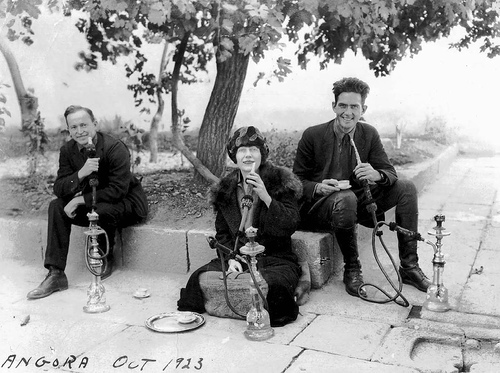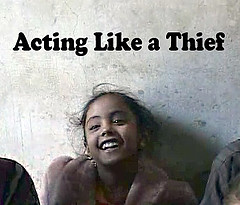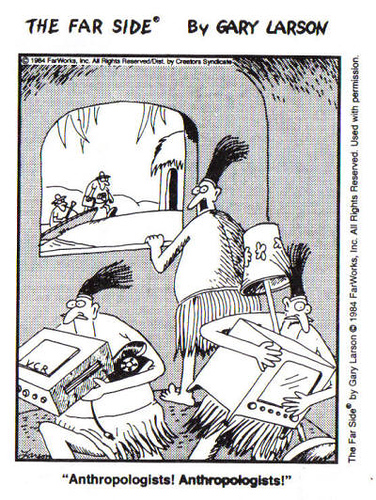One could almost use the state of anthropology in Nigeria as a field of study to illustrate the state of the discipline in West Africa, but of course, in Nigeria, it would have a distinctive Nigerian flavour. First of all, parents are mostly the ones who are responsible for their children’s university education, and not many parents are willing to pay for their children to study anthropology. The first considerations are always about whether their child would be able to get a job after completion of the course. The way to sell a degree programme to potential students – and their parents – is by highlighting the job opportunities the programme would open graduates to. Only a few students end up enrolling in programmes that offer degrees in ‘non-professional’ courses, and most of the students are offered those programmes as ‘second options’ after they are refused admission into more attractive degree programmes. Sociology has been able to make itself remain relevant by operating professional masters programmes like Master of Industrial and Personnel Relations and Masters in Project Development and Implementation, and Masters in Industrial and Labour Relations.
One does not need to think of Bohanan’s work among the Tiv of northern Nigeria, or Abner Cohen’s research among Hausa migrants in the southern Nigerian city of Ibadan before one experiences a feeling of nostalgia. There were for instance Nigerians like Angulu Onwujeogwu, Ikenna Nzimora and Victor Uchendu. In Africa at large, efforts were not just expended on doing ‘good’ anthropology and sociology; there were in fact efforts to overcome the Western epistemic assumptions that underpinned much anthropological exercise of the time. I probably don’t need to mention that anthropology was often a tool for colonialists. See, for instance, Bernard Magubane’s criticism of colonial anthropology in this Current Anthropology article. It would also be useful to see Archie Mafeje’s article that is partly a response to Magubane’s article. The point is that there was a lively discussion in anthropology on the continent.
A cursory look at the credentials of many African anthropologists of the 60s and 70s would show that they were largely Western educated, partly because African states, at that point, had a developmental agenda, and that agenda involved awarding scholarships to students to study in Western universities. And when this was not the case, many African got scholarships from Western countries. One could say that even then, with newly independent African states, anthropology was not particularly popular. I think this is linked to the involvement of anthropology in the colonial project. It is arguable that sociology enjoyed a better image than anthropology, especially with its somewhat better image as a discipline that studies ‘more civilised’ societies. That is also probably why there are very few stand-alone anthropology departments in Nigerian universities.
Things became much worse in the 80s when Nigeria’s oil wealth started turning into a curse. Serious balance of payment problems, coupled with a succession of repressive military dictatorships finally encouraged many Nigerian scholars to leave the country, and those who stayed found it increasingly difficult to work. The already unattractive anthropology even became less attractive, and joint anthropology and sociology department started doing much less of anthropology and more of sociology. The fact that many development agencies want statistical data has meant that data provision and generation concentrated in the hands of economists and sociologists. This in turn meant that fewer people got interested in doing graduate degrees in anthropology. I recently visited a Nigerian sociology and anthropology department where there was neither a single lecturer who does anthropological research, nor any graduate student who wanted to do anthropological research.
It is also in this state of the Nigerian economy state that many parents would not be willing to pay for their children to study anthropology in universities. One could also add that a desire to be modern, and therefore to study something modern, is linked to the lack of interest in anthropology, especially as people still seem to associate anthropology with the study of the primitive – in post-colonial studies terms, the Other. There is bound to be a problem for a discipline that studies the Other, when the classical definition of the Other in this context would actually be the self. I know that the experiences of people in African countries are far from uniform, and that there is of course a multiplicity of Others, but those are the fine details that almost always get lost in the quest for modernity. Yes, I throw in that word, because no matter how much we discuss the faults and failings of modernisation as a theory and as a concept, the everyday lives of young Nigerians is modeled after the dream of becoming modern. Of course, I am an anthropologist, and I understood the importance of the kind of knowledge that anthropological methods and methodologies produce, even before I decided to do a Ph.D in anthropology. And of course, there are also other really intelligent anthropologists still in Nigeria. But when one starts framing a discussion in those terms one should realise that one is talking of the exceptions and not the rule.
Some questions of course beg answers. Does Nigeria, and by extension other African countries, have need of the anthropologist’s contribution in its present predicament? Can the problems thrown up in the country be framed in anthropological ways? Are these problems not always being framed in such ways whether or not people realize or admit it, whether or not people study their society, its mental, material and behavioural artefacts, and engage one another, self and other, with the benefit of ethnographic and theoretical training received in university departments of anthropology? At the risk of sounding chauvinistic, I think that it is always anthropology, good or bad—from Huntington to Soyinka.
Any insights from other areas?





